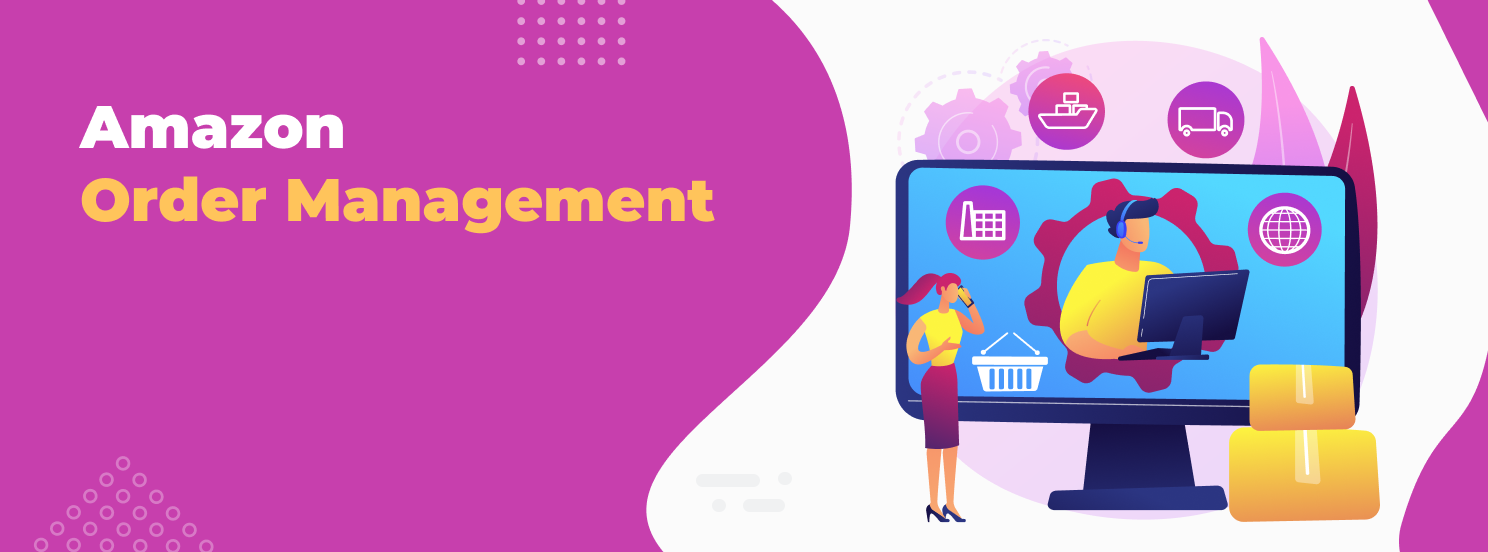
Amazon Order Management: Optimize Process from Purchase to Delivery
Managing orders is one of the most important parts of running an Amazon business. It’s not just about completing a sale—it’s about making sure every purchase moves through your system smoothly, from the moment a customer clicks “Buy” to the moment they receive their package. When done right, Amazon order management can save you time, improve your performance in Seller Central, and help your business grow in the competitive marketplace.
Table of contents
What Is Amazon Order Management?
Amazon order management refers to the full process of handling purchases: confirming orders, arranging fulfillment, tracking shipments, and updating your order history. It’s all managed through Seller Central, which acts as your control panel. Here, you can view customer details, track performance metrics, and ensure your fulfillment process runs efficiently.
Having the right system in place is crucial. Without it, delays, stockouts, and errors can hurt your metrics and reduce customer trust. With a strong workflow, you can stay organized, avoid mistakes, and keep your e-commerce business running smoothly.
Why Order Management Matters for Sellers
On a platform where Amazon processes approximately 12 million orders daily and generates around $1.75 billion in daily revenue, a reliable order management process is crucial for business continuity. Effective handling ensures smooth operations during spikes and builds trust with buyers. Good performance directly impacts your Amazon metrics—delays or defects can lead to penalties or reduced visibility.
In 2023, Amazon hit record speeds for Prime deliveries: same-day and overnight order volume rose 65% year-over-year, delivering 7 billion items. This was made possible by improved inventory placement and expanded regional fulfillment. That shows how finely tuned order management can transform logistics into a competitive strength.
If you want to learn more about keeping your operations efficient, check out our guide on Amazon Supply Chain Management.
Best Practices for Amazon Order Management
Here’s a clear, structured set of best practices for Amazon order management, focusing on maintaining healthy metrics, avoiding account issues, and improving efficiency.
Maintain Accurate Inventory Levels Year-Round
Keeping your inventory accurate is the foundation of smooth order management. By monitoring stock levels consistently, you can prevent overselling and ensure customer satisfaction. Consider these practical strategies:
Sync inventory in real time across all channels to avoid overselling. Overselling often leads to order cancellations and negatively affects your Order Defect Rate (ODR), which Amazon requires to stay below 1%.
Set automated low-stock alerts, for example, when inventory reaches 20% of your average daily demand. This ensures you replenish stock before it runs out.
Analyze seasonal demand: Increase inventory by 20–40% during peak seasons (Prime Day, Q4 holidays) and reduce in low seasons to avoid overstock and long-term FBA storage fees, which can increase by 25–50% for aged inventory.
One effective way to prepare for the high season is to track competitors’ sales of similar products using the Product History feature in AMZScout PRO AI. This tool allows you to review historical trends in sales, prices, and revenue over the past two years, helping you anticipate demand levels during peak sales periods.
By leveraging accurate data, you can make better decisions about purchase quantities and timing, ensuring that you meet customer demand without overcommitting your resources.
Automate Order Processing
Automation reduces manual errors and speeds up your workflow. The following steps can help streamline your order processing:
Integrate an order management system (OMS) to automatically pull orders from Seller Central and route them for fulfillment, reducing processing time by 30–50%.
Automate label printing and order routing with tools like ShipStation, Linnworks, or similar platforms to reduce errors and speed up shipping preparation.
Set rules for multi-channel fulfillment, for example, automatically route products from FBA if available, otherwise use FBM.
Using automation tools allows you to focus on strategy rather than repetitive tasks, helping you scale your operations more efficiently.
Fulfill Orders with Precision and Consistency
Fast delivery is a reason why 36% of customers choose Amazon over other retailers. This means your order management process must prioritize speed and accuracy at every step of fulfillment. Efficient sorting, packing, and shipping not only meet customer expectations but also protect your seller metrics and increase repeat business.
Ship within the promised handling time (usually 1–2 business days for FBM). Late shipments impact the Late Shipment Rate, which must stay below 4%.
Use packaging that meets Amazon’s standards and protects products from damage. Damaged orders often result in returns, and in some categories like electronics, return rates can reach 8–10%.
Conduct random quality checks before shipping, especially for fragile or high-value items.
Leverage FBA for reliable SLA, access to Prime marketing, and generally higher delivery and feedback ratings.
Whether you're using FBA or self-fulfillment, ensuring consistent, error-free packing and shipping is vital. For FBM sellers, tools like Amazon’s Automated Handling Time and Shipping Settings Automation can auto-adjust delivery estimates, balancing handling time, carrier transit, and holidays to maintain customer trust.
Track Shipments and Keep Customers Informed
Communicating order status effectively builds trust with buyers. To keep customers informed:
Always provide tracking numbers—orders without tracking often lead to disputes.
Proactively update customers on their order status, particularly if delays occur. This reduces negative reviews by 15–25%.
Monitor delivery performance metrics in Seller Central to identify and address carrier issues promptly.
Set realistic delivery estimates—exceeding customer expectations increases the likelihood of positive reviews and repeat purchases.
Maintaining transparency throughout the delivery process strengthens customer confidence and minimizes complaints.
Provide Clear and Responsive Customer Service
Customer service is the final touchpoint in your order management system. Strong service reinforces customer loyalty and protects your account metrics:
Respond to buyer messages within 24 hours—Amazon directly monitors Seller Response Time.
Resolve issues in the first reply to increase customer satisfaction and reduce escalations to Amazon.
Maintain a knowledge base of FAQs and templates to speed up communication and cut message handling time by 30–40%.
Monitor and respond to reviews—53% of buyers expect brands to reply to reviews, especially negative ones.
By prioritizing clear and timely communication, you can turn customer interactions into opportunities for positive engagement and repeat sales.
Conclusion
Amazon order management isn’t just a backend task—it’s a strategic advantage. By aligning inventory, automating processing, perfecting fulfillment, ensuring transparency, and upholding customer experience, you build a system that scales and performs under pressure. Backed by smart tools like AMZScout and leveraging Amazon’s automation features in Seller Central, you’ll manage orders with confidence, accuracy, and speed. That leads not only to happier customers—but to stronger, more resilient e-commerce success.





